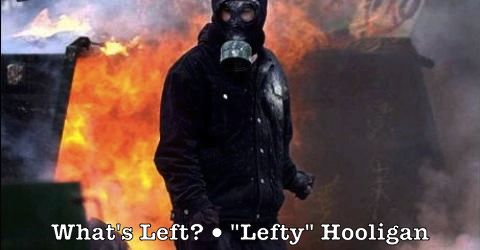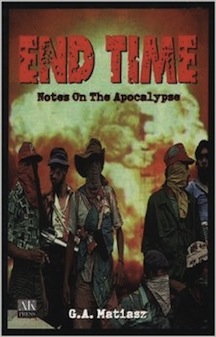 The more I love humanity in general the less I love man in particular.
The more I love humanity in general the less I love man in particular.
—Fyodor Dostoevsky, The Brothers Karamazov
From 1914 to the present, between one hundred and eight million and one hundred sixty million people died in war. War between capitalist powers but also war between capitalist powers and socialist nations—Soviet bloc, Red China, the Third World—has produced mass human casualties. I’m a socialist who believes such forms of socialism were never really socialist. So-called “real existing socialism” has largely failed and we now live primarily in a capitalist world run by an international bourgeoisie.
According to the Left, war is only one of the many evils that capitalism causes. Genocide, exploitation, poverty, ableism, ageism, classism, racism, anti-semitism, sexism, homophobia—the list is long. When socialism is achieved—when the stateless, classless, global human community is attained—all the above evils of capitalism will disappear. Yeah, right! I’m a socialist, but I’m not an idiot. To illustrate the absurdity of that claim, let’s consider just the prevalence of war.
But first some Marxism.
 The classic Renaissance periods of human history (Ancient/Medieval/Modern) was augmented by the Scottish Enlightenment model of human development (Hunting/Pastoral/Agricultural/Commercial Societies). Marx then propounded a stage theory of economic development where humanity passed through “modes of production,” each mode a combination of productive forces and social/technical relations of production. Beginning with classless primitive communism, class societies moved from ancient through feudal to capitalist stages, finally advancing to classless advanced communism. Each class-oriented mode of production is defined by how labor was organized, starting with the slave societies of ancient Greece and Rome, moving through serf-based feudalism, finally reaching capitalist societies reliant on workers. I consider this Marxist schema vulgar, riven with anomalies like the “Asiatic mode of production/Oriental despotism,” and thus needs to be taken as descriptive rather than prescriptive.
The classic Renaissance periods of human history (Ancient/Medieval/Modern) was augmented by the Scottish Enlightenment model of human development (Hunting/Pastoral/Agricultural/Commercial Societies). Marx then propounded a stage theory of economic development where humanity passed through “modes of production,” each mode a combination of productive forces and social/technical relations of production. Beginning with classless primitive communism, class societies moved from ancient through feudal to capitalist stages, finally advancing to classless advanced communism. Each class-oriented mode of production is defined by how labor was organized, starting with the slave societies of ancient Greece and Rome, moving through serf-based feudalism, finally reaching capitalist societies reliant on workers. I consider this Marxist schema vulgar, riven with anomalies like the “Asiatic mode of production/Oriental despotism,” and thus needs to be taken as descriptive rather than prescriptive.
Now let’s consider the mortality figures from a selection of wars throughout history.
The ancient Roman civil wars (Servile and Social) cost between 3 and 5 million lives. The feudal Chinese Three Kingdom War had a death toll of 36 to 40 million. The purely capitalist first World War produced over 40 million military and civilian casualties. The mixed capitalist/socialist second World War drestroyed between 70 and 85 million lives. But the winner is the rise of the Mongol Empire. The Mongol invasions/conquests of Asia and Europe in the 13th and 14th centuries combined various factors; aspects of “Asiatic mode of production/Oriental despotism” (centralized state structure), feudalism (decentralized fief system), and ancient labor practices (enslavement of Turkish and Slavic peoples), resulting in subjugating almost 25% of the world’s inhabitants. Between 40 and 70 million people were slaughtered across Eurasia in a population loss that may have affected up to 11% of the world’s population. Besides gruesome military battles and sieges, the Mongols practiced wholesale massacres, intentional famines, forced migrations, crude biological warfare, genocide and androcide.
 At least one billion humans have died in war throughout all of human history, and that figure could easily be doubled without exaggeration. The horrors of class-based human civilization with regard to warfare alone makes the allure—the utopian fantasy—of classless post-capitalist egalitarian communism obvious. Marx’s “mode of production” theory, in bookending class-based civilization with primitive communism and advanced communism, in turn fueled the primitivist myth that our Paleolithic ancestors were peaceful, ecological, goddess-worshipping hunter/gatherers uncorrupted by civilization and science. Put forward by John Zerzan and Paul Shepard, it simplistically reprises Romantic era fantasies of the primeval paradise and the noble savage.
At least one billion humans have died in war throughout all of human history, and that figure could easily be doubled without exaggeration. The horrors of class-based human civilization with regard to warfare alone makes the allure—the utopian fantasy—of classless post-capitalist egalitarian communism obvious. Marx’s “mode of production” theory, in bookending class-based civilization with primitive communism and advanced communism, in turn fueled the primitivist myth that our Paleolithic ancestors were peaceful, ecological, goddess-worshipping hunter/gatherers uncorrupted by civilization and science. Put forward by John Zerzan and Paul Shepard, it simplistically reprises Romantic era fantasies of the primeval paradise and the noble savage.
Marx and Engels asserted that Paleolithic humans existed in a state of “primitive communism,” a relatively classless, communalist social order of nomadic hunter/gatherer bands and tribes. These egalitarian societies practiced mutual exchange and resource sharing. Marshall Sahlins argues that such a social order was the original affluent society in which people worked as little as ten to twenty hours a week in order to survive. Such societies were affluent because their members were content with little in the material sense, enjoying more leisure and working less than did members of modern society. But when hunter/gatherer communities experienced environmental drought and famine they tended to become culturally/physically extinct.
 Human beings existed for hundreds of thousands of years as nomadic tribal hunter/gatherer societies, “over 99 percent of the time that the genus Homo has existed on the planet, about two million years.” This primitive communism wasn’t a “utopia of basket-weaving peace lovers” (per Dean Burnett) by any stretch. Our early ancestors may not have engaged in the organized lethal violence we call warfare until they developed sedentary agricultural societies, but there is evidence that intergroup aggression often occurred between hunter/gatherer bands in the form of raids to steal foodstuffs and perhaps women. (Engels’ thesis in The Origin of the Family, Private Property and the State that primitive matriarchies were overthrown by patriarchal coups intent on securing male lineages for children is inaccurate. Apparently, women have often been considered “spoils.”) This includes observations that modern hunter/gatherers engage in ritual team fighting games to learn and exercise the coordination and motor skills needed for lethal raiding and warfare, suggesting there are elements of sport and pleasure to such homicidal behavior. Then and now, a particularly deadly raid against a small, culturally or ethnically distinct tribe might result in its complete annihilation. In other words, primitive genocide.
Human beings existed for hundreds of thousands of years as nomadic tribal hunter/gatherer societies, “over 99 percent of the time that the genus Homo has existed on the planet, about two million years.” This primitive communism wasn’t a “utopia of basket-weaving peace lovers” (per Dean Burnett) by any stretch. Our early ancestors may not have engaged in the organized lethal violence we call warfare until they developed sedentary agricultural societies, but there is evidence that intergroup aggression often occurred between hunter/gatherer bands in the form of raids to steal foodstuffs and perhaps women. (Engels’ thesis in The Origin of the Family, Private Property and the State that primitive matriarchies were overthrown by patriarchal coups intent on securing male lineages for children is inaccurate. Apparently, women have often been considered “spoils.”) This includes observations that modern hunter/gatherers engage in ritual team fighting games to learn and exercise the coordination and motor skills needed for lethal raiding and warfare, suggesting there are elements of sport and pleasure to such homicidal behavior. Then and now, a particularly deadly raid against a small, culturally or ethnically distinct tribe might result in its complete annihilation. In other words, primitive genocide.
There are disputed theories that genocidal violence was used to wipe out the Neanderthals. More evidence of war exists for late Paleolithic massacres at Jebel Sahaba, Sudan, and Nataruk, Kenya, when scenes of human violence started to be depicted in cave paintings. Warfare seems to have begun in earnest with the transition from nomadic to sedentary societies between the Paleolithic and Neolithic periods.
 The problem with anthropological and archeological theories regarding Paleolithic warfare is that there’s virtually no physical evidence pro or con. To repeat, there’s almost no proof for or against primitive warfare. Those who find the lack of evidence an affirmation that hunter/gatherer societies were overwhelmingly peaceful dispute those researchers who would use ethnographic comparisons with historical or modern hunter/gatherer societies to speculatively fill in the gaps of prehistory, accusing the latter of cultural bias. Those who contend that egalitarian Paleolithic hunter/gatherers were peaceful argue that most lethal disputes were personal and directed toward particular individuals, not group versus group conflicts that amounted to raids and blood feuds if not low-level warfare. Hunter/gatherers, being mobile, tended to move to avoid threats and conflict. Only when natural disaster, resource scarcity, territorial impingement or overpopulation put stress on hunter/gatherer societies did they resort to intergroup aggression and killings which on occasion escalated into raids, blood feuds and warfare. To insist that nomadic hunter/gatherers were warlike is to postulate without proof, on gut instinct or from an agenda. Few scientists doubt that prehistoric humans were incapable of murder. What is in question was whether individual, personal killings could transmute into intergroup warfare. Absence of evidence unfortunately is not evidence of absence.
The problem with anthropological and archeological theories regarding Paleolithic warfare is that there’s virtually no physical evidence pro or con. To repeat, there’s almost no proof for or against primitive warfare. Those who find the lack of evidence an affirmation that hunter/gatherer societies were overwhelmingly peaceful dispute those researchers who would use ethnographic comparisons with historical or modern hunter/gatherer societies to speculatively fill in the gaps of prehistory, accusing the latter of cultural bias. Those who contend that egalitarian Paleolithic hunter/gatherers were peaceful argue that most lethal disputes were personal and directed toward particular individuals, not group versus group conflicts that amounted to raids and blood feuds if not low-level warfare. Hunter/gatherers, being mobile, tended to move to avoid threats and conflict. Only when natural disaster, resource scarcity, territorial impingement or overpopulation put stress on hunter/gatherer societies did they resort to intergroup aggression and killings which on occasion escalated into raids, blood feuds and warfare. To insist that nomadic hunter/gatherers were warlike is to postulate without proof, on gut instinct or from an agenda. Few scientists doubt that prehistoric humans were incapable of murder. What is in question was whether individual, personal killings could transmute into intergroup warfare. Absence of evidence unfortunately is not evidence of absence.
Marx postulated a basic human nature, what he called species-being. Humans are social animals. Their essence, their nature, is in reality “an ensemble of social relations.” To change the totality of social relations is to change that essence. And to change the mode of production is to change aspects of human nature. Some forms of social behavior—language, music, work, play, intoxication, transcendence—seem to have endured throughout human existence—history and prehistory. I’m afraid that war may be one of those persistent social relations, part of the social panoply that constitutes human nature even during Paleolithic times.
 This also means that if and when capitalism is overthrown not all the social ills attributed to capitalism will necessarily be eliminated. I purposefully limited the discussion to war so that the whole range of evils (exploitation, racism, sexism, et al) associated with class societies will not also have to be considered. But if war is a fact of human nature, part of classless primitive communism, will war manifest through advanced classless communism? Certainly the countries practicing “real existing socialism” engaged in warfare with each other (USSR/China, China/Vietnam, Vietnam/Cambodia, etc). Then contemplate the war games practiced by the fictional ecological utopia in Ernest Callenbach’s Ecotopia as a way to avoid war.
This also means that if and when capitalism is overthrown not all the social ills attributed to capitalism will necessarily be eliminated. I purposefully limited the discussion to war so that the whole range of evils (exploitation, racism, sexism, et al) associated with class societies will not also have to be considered. But if war is a fact of human nature, part of classless primitive communism, will war manifest through advanced classless communism? Certainly the countries practicing “real existing socialism” engaged in warfare with each other (USSR/China, China/Vietnam, Vietnam/Cambodia, etc). Then contemplate the war games practiced by the fictional ecological utopia in Ernest Callenbach’s Ecotopia as a way to avoid war.
Whereas I like and love certain human beings individually, I fear and despise humanity collectively and in the abstract. Thus I reverse Dostoevsky’s literary observation. I’ve become more cynical of humanity the older I get. In a previous column discussing alien life and the Drake Equation, I mentioned the “Great Filter Hypothesis” as to why intelligent life might not naturally arise or sustain itself for any length of time. One possibility is that the evolution of intelligence cosmically might go hand in hand with self-destruction so that as life becomes more sentient it becomes more suicidal. Human history seems to bear out that hypothesis as we humans increasingly destroy our own species and the world.
 SOURCES:
SOURCES:
Personal recollections
“Theses on Feuerbach” by Karl Marx (1845)
The Origin of the Family, Private Property and the State by Friedrich Engels (1884)
Les hommes fossiles by M. Boule (1920)
“Social Stratification in Polynesia: a Study of Adaptive Variation in Culture” (1954) and “Stone Age Economics” (1974) by Marshall Sahlins
War Before Civilization by Lawrence Keeley (1996)
The Ecological Indian by Shepard Krech (1999)
The Myth of Matriarchal Prehistory by Cynthia Eller (2000)
How War Began: The Myth of the Peaceful, Noble Savage by Keith Otterbein (2004)
Reinvention of Primitive Society by Adam Kuper (2005)
The Origins of War: Violence in Prehistory by Guilaine and Zammit (2005)
Constant Battles: Why We Fight by Le Blanc and Register (2013)
War, Peace, and Human Nature edited by Douglas P. Fry (2013)
“Inter-group violence among early Holocene hunter-gatherers of West Turkana, Kenya” by M. Mirazón Lahr et al (Nature volume 529, 1-20-2016)
“Hominin interbreeding and the evolution of human variation” by Kwang Hyun Ko (Journal of Biological Research-Thessaloniki, 2016)
“Coalitional Play Fighting and the Evolution of Coalitional Intergroup Aggression” by Sugiyama, Mendoza, White & Sugiyama (Nature, 6-29-2018)
https://leftyhooligan.wordpress.com/2009/11/01/long-live-war-whats-left-november-2009-mrr-319/https://leftyhooligan.wordpress.com/2021/12/01/alien-life-lefty-hooligan-whats-left-december-2021/https://leftyhooligan.wordpress.com/2022/07/01/left-of-the-left-lefty-hooligan-whats-left-july-2022/

































































